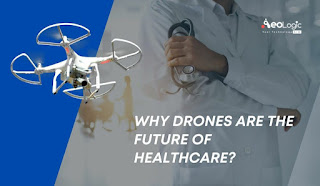Drone Technology
Drones technology is a rapidly evolving field of engineering and innovation that has the potential to revolutionize many aspects of our lives. From agriculture to military operations, drones are being used in a variety of industries. In this article, we will explore the current state of drone technology, the potential applications of drones, and the ethical implications of drones.
What is Drone Technology?
Drone technology combines two distinct elements – unmanned aerial vehicles (UAVs) and artificial intelligence (AI). UAVs are aircraft that are remotely operated from a ground control station or a computer. They are typically equipped with cameras, sensors, and other equipment to enable their operation. AI is a form of computer intelligence that enables machines to think and act like humans. The combination of UAVs and AI enables drones to be used for a wide range of tasks and applications.
Applications of Drone Technology
Drones are being used in a variety of industries and applications, from agriculture to military operations. In the agricultural sector, drones are being used to monitor crops and detect pests, diseases, and water shortages. In the military, drones are being used for surveillance, reconnaissance, and even combat operations. In the commercial sector, drones are being used for delivery services, aerial photography and videography, and search and rescue operations.
Ethical Implications of Drone Technology
As with any new technology, the use of drones raises a number of ethical questions. For example, should drones be used for surveillance purposes? What about for military operations? Who should be responsible for regulating the use of drones? What safeguards should be in place to protect the privacy of individuals?
These are difficult questions to answer, and as drone technology continues to evolve, the ethical implications of its use will need to be considered. For example, there are concerns about the privacy implications of surveillance drones, as well as the potential for misuse by governments or individuals. Likewise, the potential for drones to be used in a military capacity raises questions about the potential for civilian casualties.
Conclusion
Drone technology is a rapidly evolving field of engineering and innovation that has the potential to revolutionize many aspects of our lives. From agriculture to military operations, drones are being used in a variety of industries. While the potential applications of drones are vast, the ethical implications of their use must also be considered. As drone technology continues to evolve, it is important to ensure that the use of drones is properly regulated and that the privacy of individuals is protected.
Advantage of Drone Technology
1. Increased Efficiency: Drones are able to cover large areas quickly and can be used for surveillance and inspection of areas that would otherwise be difficult or dangerous for humans to access.
2. Cost Savings: The use of drones can reduce the cost of labor, materials, and travel, leading to savings in overall operational costs.
3. Enhanced Safety: Drone technology can be used to monitor hazardous locations and, if necessary, to deploy emergency medical aid or evacuation.
4. Improved Accuracy: Drones are equipped with high-resolution cameras that can provide detailed imagery, allowing for accurate data collection.
5. Increased Versatility: Drones can be used for a variety of applications, including aerial photography, surveillance, search and rescue, and delivery.
Disadvantage of drones technologies
1. Risk of Invasion of Privacy: Drones can be used to spy on people and invade their privacy, which is a major concern for many individuals.
2. Unsafe for People and Property: Drones can be dangerous when they are used in crowded areas and can cause physical harm to people and property.
3. Loss of Jobs: The increased use of drones could lead to job losses as they can be used to do many of the same tasks that people currently do.
4. High Costs: The high cost of purchasing, maintaining, and operating drones is a major disadvantage of using drones.
5. Data Security: Drones can be used to collect sensitive data, which could be vulnerable to hackers if not properly secured.
Application of drones technologies
1. Agriculture: Drones are being used to monitor crop health, assess soil conditions, and even spray fertilizers and pesticides.
2. Delivery: Companies such as Amazon, Walmart, and UPS are exploring the possibility of using drones to deliver packages.
3. Search and Rescue: Drones are used to search large areas quickly, helping to locate lost individuals or objects.
4. Security: Drones can be used to monitor large areas, detect intruders, and even recognize facial features.
5. Surveillance: Drones can be used to inspect infrastructure and monitor illegal activity.
6. Emergency Services: Drones can be used to deliver medical supplies to remote locations and disaster areas.
7. Weather Monitoring: Drones are being used to measure wind speed and other weather-related data.
8. Photography and Videography: Drones are used to capture stunning aerial shots and videos.
Points for drones technologies
1. Automation: Drones can be programmed to fly automatically, eliminating the need for manual control of the aircraft.
2. Increased safety: Drones are capable of performing dangerous tasks in hazardous environments with minimal risk to human life.
3. Cost savings: Drones can reduce the cost of labor and the cost of operations by reducing the need for manual labor and human supervision.
4. Improved accuracy: Drones can be used to survey terrain and collect data with a high degree of accuracy and precision.
5. Improved surveillance: Drones can be used to monitor and survey areas that are inaccessible or difficult to reach with traditional methods.
6. Enhanced data collection: Drones can be used to collect data from multiple sources and provide a more complete picture of the environment.
7. Improved navigation: Drones can be used to map and navigate a variety of terrain with a high degree of accuracy.
8. Improved communication: Drones can be used to provide communication links between remote locations.
Links for drones technologies
2. https://www.intel.com/content/www/us/en/drones/technology.html
6. https://www.wired.com/tag/drones/
8. https://www.aerialrobotics.org/
9. https://www.theverge.com/drones
10. https://www.bloomberg.com/news/features/2018-06-20/the-drone-revolution-is-here-are-you-ready
.png)





